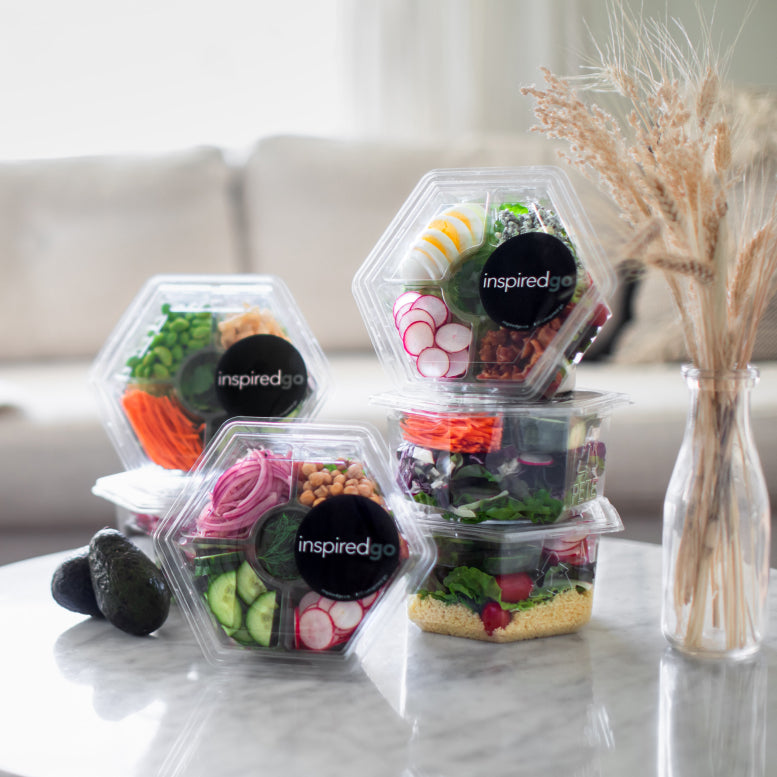What Are The Delivery Fees For Vegan Meal Services?
Table of Contents
1. Understanding Delivery Fees for Vegan Meal Services
2. Is Being Vegan Healthier for You?
3. How Are Vegan Meal Delivery Menus Designed?
4. How Does Inspired Go Make Vegan Eating Easy?
1. Understanding Delivery Fees for Vegan Meal Services
When considering vegan meal services, it's important to factor in not only the cost of the meals themselves but also the associated delivery fees. These can vary widely depending on the company, your location, and the frequency of your orders. Some companies offer free delivery for a minimum order amount, while others may charge a flat rate or calculate fees based on distance. Subscription plans often include delivery costs in their pricing, making it a more cost-effective option for regular orders. To ensure transparency, these charges are usually disclosed at checkout or in the service's FAQ section. Remember, investing in a vegan meal service isn't just about the convenience of having meals delivered to your door - it's also about investing in your health, supporting ethical food practices, and potentially reducing food waste at home.
Order fresh salads today →


2. Is Being Vegan Healthier for You?
A well-balanced vegan diet is often associated with significant health benefits, including lower cholesterol levels, reduced risk of heart disease, and improved digestion. Plant-based diets are naturally high in fiber, antioxidants, and essential vitamins while being lower in unhealthy fats and processed sugars. However, the healthiness of a vegan diet depends on balanced meal planning to include critical nutrients such as vitamin B12, iron, and omega-3 fatty acids. Vegan meal delivery services help bridge these gaps by offering carefully crafted meals that prioritize nutritional completeness. By taking the guesswork out of meal prep, these services make it easier for customers to experience the health benefits of veganism without worrying about deficiencies or imbalanced nutrition.
Choose your salads and schedule delivery →
3. How Are Vegan Meal Delivery Menus Designed?
Vegan meal delivery menus are carefully crafted to offer both variety and balanced nutrition. Professional chefs design recipes that incorporate a mix of fresh vegetables, whole grains, and plant-based proteins to ensure every meal is satisfying and nutritionally complete. Seasonal produce often plays a key role, enhancing both flavor and nutrient density. Menus also frequently draw inspiration from global cuisines, introducing dishes such as vegan curries, pasta, and tacos. Additionally, options are available for specific dietary needs, including gluten-free, high-protein, or low-carb preferences. By rotating menus regularly, vegan meal delivery services prevent menu fatigue while ensuring customers enjoy creative, delicious meals every day.
Get fresh salads and snacks delivered →
4. How Does Inspired Go Make Vegan Eating Easy?
Inspired Go eliminates the hassle of meal planning, shopping, and cooking while still delivering nutritionally balanced vegan meals. Each dish is crafted with fresh, high-quality ingredients and designed to provide a full spectrum of essential nutrients, including plant-based proteins, fiber, and healthy fats. Inspired Go’s chefs draw inspiration from global cuisines, creating delicious, ready-to-eat options like grain bowls, vibrant salads, and hearty pasta dishes. With detailed nutritional labeling, customers can track their intake confidently, ensuring they meet their dietary needs without the complexity of meal prep. Whether you’re a long-time vegan or just exploring plant-based eating, Inspired Go offers a simple, delicious, and convenient way to enjoy a healthy vegan diet.
Try our fresh, ready-to-eat salads →
Frequently Asked Questions
The key difference between vegan and vegetarian diets lies in the exclusion of animal products. Vegetarians avoid meat, poultry, and fish but may consume animal-derived products like eggs, dairy, or honey. Vegans, on the other hand, exclude all animal products, focusing solely on plant-based foods. Veganism is often a lifestyle choice, avoiding animal products in all forms, including clothing and cosmetics.
A vegan diet consists entirely of plant-based foods, including fruits, vegetables, grains, nuts, seeds, and legumes. It excludes all animal-derived products, such as meat, fish, dairy, and eggs. This diet emphasizes nutrient-dense, whole foods, though processed vegan alternatives are available. A vegan diet, when well-balanced, supports good health and environmental sustainability, making it popular for ethical, health, and ecological reasons.
Not all vegan diets are gluten-free. While veganism excludes animal products, gluten is a protein found in wheat, barley, and rye, which are plant-based and commonly included in vegan meals. To maintain a vegan and gluten-free diet, focus on naturally gluten-free foods like fruits, vegetables, rice, quinoa, and gluten-free grains. Always check labels for hidden gluten in processed vegan foods.
On a vegan diet, you can enjoy a wide variety of plant-based foods, including fruits, vegetables, legumes, nuts, seeds, whole grains, and plant-based dairy alternatives. Popular vegan dishes include stir-fries, salads, grain bowls, soups, and curries. Incorporating fortified foods or supplements ensures you meet nutrient needs like B12, iron, and omega-3s, making the diet balanced and enjoyable.
A vegan diet can be very healthy when balanced and diverse. It’s rich in fiber, vitamins, and antioxidants, while being lower in saturated fat and cholesterol. These factors contribute to better heart health, weight management, and reduced risk of chronic diseases. However, careful planning is essential to ensure adequate intake of nutrients like vitamin B12, iron, and protein for overall health.

